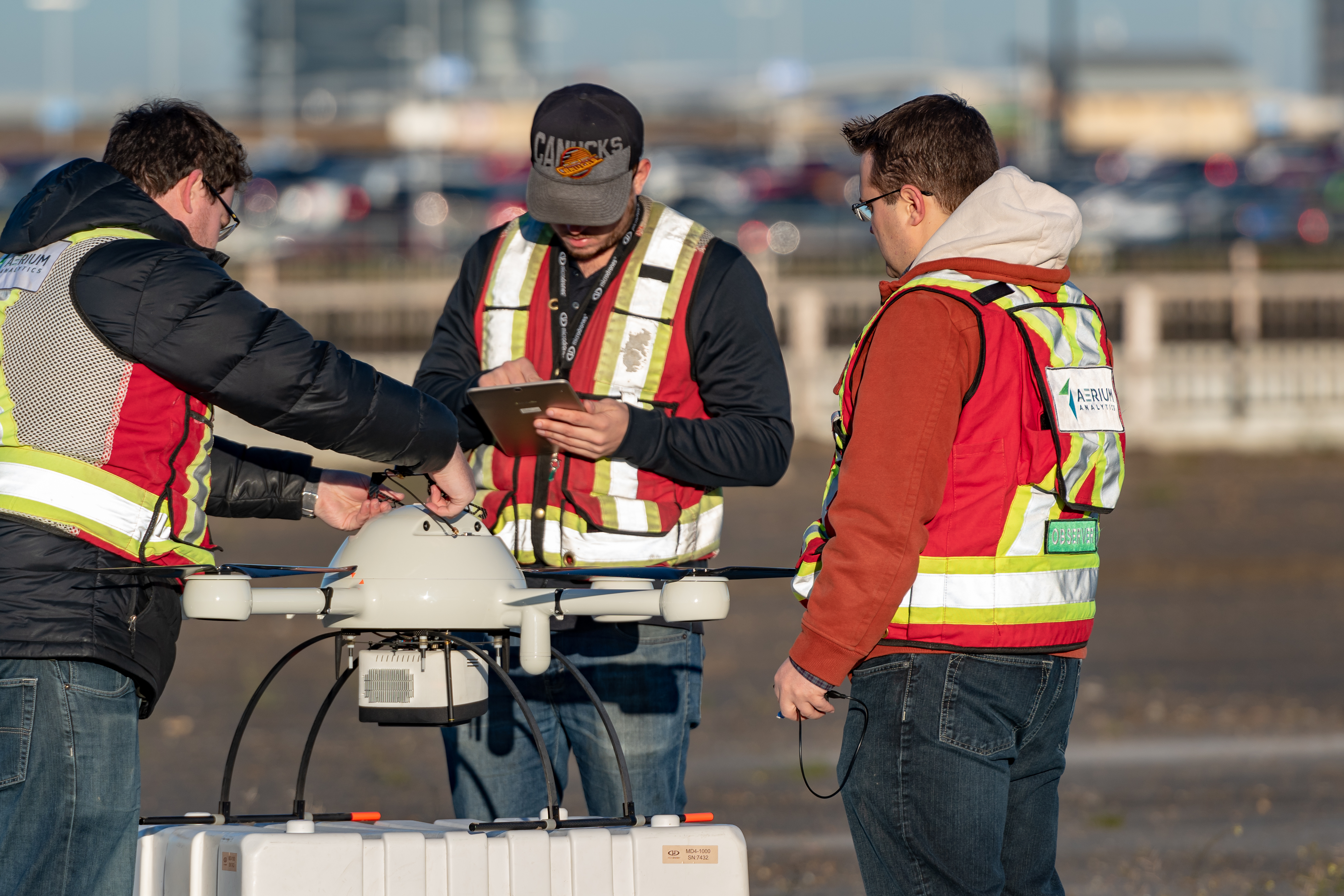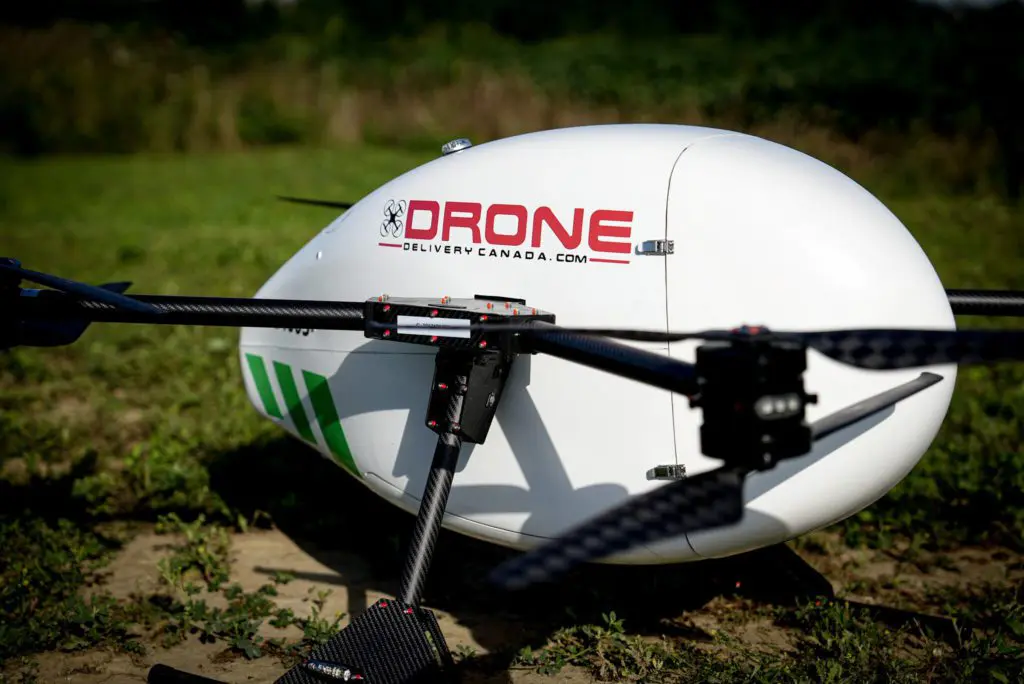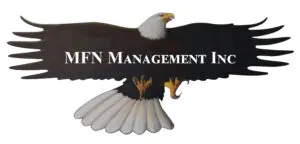- Part IX of the current Canadian Aviation Regulations (CARs) permits the use of unmanned aircraft, under visual-line-of-site operations, in an aerodrome environment. An advanced pilots’ certificate is required to fly within controlled airspace, which requires passing of a written test as well as review by an approved flight reviewer.
- The type of aerodrome and the category of surrounding airspace determine the applicable operating rules, pilot licencing requirements and aircraft safety standards. For those aerodromes in controlled airspace, prior approval is also required from NAV CANADA.
- The existing CARs Part IX, and the accompanying Advisory Circular, also address the required processes for gaining approval to conduct beyond visual-line-of-sight operations in various environments, including around aerodromes. In these situations, the RPAS operator is required to provide Transport Canada, a completed risks assessment or safety case showing that the planned operation can be conducted to an acceptable level of safety.
- Currently, the use of recreational drones is prohibited at or within 13km (7 nautical miles) of the airport.
- Anyone wanting to fly within the control zone submits a request through NAV Canada who will then notify YEG.
- The NAV Canada RPAS requirements are at: https://www.navcanada.ca/EN/products-and-services/RPAS/Pages/default.aspx .
- The Nav Canada site selection tool is at: https://nrc.canada.ca/en/drone-tool/
Drone Operations
YEG is a national leader in drone technology
Safety and security is our first priority, and all drone operations at YEG are carefully managed in partnership with federal regulators, Transport Canada and Nav Canada, as well as the Remotely Piloted Aircraft Systems (RPAS) companies involved. The use of recreational drones is prohibited at or within 13 km (7 Nautical Miles) of the airport.
For more information on legal requirements to operate drones, please click here.
Drones are used for a variety of special programs at YEG, such as our advanced wildlife management program that uses a falcon-shaped Robird drone. YEG has also employed this technology for LIDAR scans of our runways to detect safety and maintenance issues before they arise. YEG was the first Canadian airport to have drones operate at night, to enhance aircraft landing safety, as well as Canada’s first airport to integrate drone logistics into its operations.
Embracing this technology at YEG creates jobs, fosters innovation and technology growth and helps keep us at the leading edge of future aviation trends and technology. This is why YEG has been proud to partner with technology companies as part of the Alberta Aerospace and Technology Centre to advance RPAS and related technologies, including the design and manufacture of drones at YEG. AATC is also part of the effort to make the Edmonton Metropolitan Region into a Living Lab where technology and regulations can be advanced together.
YEG will continue to bring drones closer to a sustainable commercialized mode of transport. The future goal is to deliver final-mile packages for e-commerce businesses, removing vehicles from the road, reducing congestion and helping to control air pollution and emissions.

Commercial cargo drone operations
- In May 2022, we began regularly scheduled commercial drone delivery operations in controlled airspace. Since then, Drone Delivery Canada’s (DDC) drone has serviced more than 3,000 commercial drone flights over a distance of more than 8,400 km.
- Phase two of the project launched mid-2024 and expands the route to Montana First Nation’s Akamihk Medical Clinic in the City of Leduc, growing the drone flight path and increasing innovative and sustainable first- and final-mile delivery of high-value, time-critical products.
- This innovative partnership is the first drone program in Canada to safely intersect with the runway glide path and helps open doors for efficient and sustainable commercialized drone delivery.

Leading the use of RPAS at airports
Delivery done different
Additional Information
- Continue the safe integration of RPAS operation at airports and into the current management of air traffic.
- Continue to educate the public on the safe use of drones in all airspace, especially controlled airspace.
- Develop technologies that identify non-cooperative RPAS incursions (airspace awareness) to help keep our passengers and clients safe.
- BVLOS operations, where the controller cannot see the RPAS. Technologies, such as detect-and-avoid capabilities (whether airborne or ground based) will need to be proven to ensure the safety of other airspace users. DDC is working towards these goals through the development of a Ground Based Sense and Avoid capability which will be used to ensure that their unmanned aircraft can be safely separated from traditional aircraft.
- In Canada, the RPAS industry continues to advance thanks to the innovation from companies like YEG’s partners, and by having a regulator willing to work with the industry to foster an environment where safe RPAS operations can be conducted. Transport Canada has supported the continued advancement of the RPAS industry’s capabilities through various trials and pilot projects, which provide the regulator critical data needed to develop effective regulations.
- YEG’s mandate is to drive economic growth in the Edmonton Metropolitan Region through air service and commercial development. So economic development and diversification are the main reasons why YEG has helped to advance RPAS and related technologies in partnership with technology companies as part of the Alberta Aerospace and Technology Centre (AATC), including the design and manufacture of RPAS at YEG.
- Airport City is also part of the effort to make the Edmonton Metropolitan Region into a Living Lab where technology and regulations can be advanced together. Its activities are centered around the Alberta Aerospace & Technology Centre, where the goal is to build a cluster of activity in aerospace and technology, which will serve as a centre for R&D innovation in aviation.
- Flight simulators & training, managing wildlife with robots, remote operated vehicles and fuel innovation are a few of the areas being explored under the umbrella of YEG’s innovation lab.
- YEG has teamed up with advanced technology development group, Alberta Centre for Advanced Micro-Nano-Technology Products (ACAMP), to help entrepreneurs move their ideas from proof-of-concept to manufactured product by providing access to engineers, technology experts, specialized equipment, and industry acumen.
- YEG reduces the risk away for innovation pioneers by offering flexible lease contracts.
Business development
For more information on commercial drone opportunities at YEG contact:
Drone safety and operations
For more information on using drones at YEG contact:




